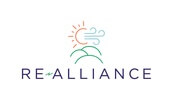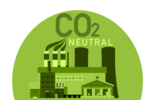News Release from Re-Alliance
Wind Industry Profile of
A transmission to-do list
Our last blog looked at the recommendations from our Building Trust for Transmission report that have been implemented, and that have led to transmission-related reforms over the last 18 months.
Now, we look to the future, and at what further opportunities for transmission reform will enable the roll-out of new renewable generation and the decarbonisation of the electricity generation sector.
These reforms were recommended in our report Building Trust for Transmission and in the climate and environment movement’s recommendations to the Federal Government in Achieving Fast, Fair and Sustainable Transmission Development: Rewiring the Nation Report and/or have been recently committed to by Government or energy market bodies.
COMMITTED AND TO DO:
For the Commonwealth:
The RIT-T Review: Expanding the RIT-T to include the social and environmental costs and benefits to local communities
This recommendation was taken up by the Hon Chris Bowen last year when he foreshadowed a review of the RIT-T, saying a Labor Government “would work with the states, market bodies, networks, and most importantly communities, to improve the RIT-T process.” RE-Alliance understands that this item is on the Government’s to-do list this year, and will keep an eye on its progress.
First Nations Clean Energy Strategy – meaningful consultation with Traditional Owners
All jurisdictions are cooperating on the First Nations Clean Energy Strategy. The Commonwealth Government has committed $5.5 million through the 2022-23 Budget, to develop a co-design process. Extensive consultation is set to begin in early 2023, and we will be watching to make sure this consultation is meaningful.
Revising the CEFC’s investment mandate: supporting transparency around Rewiring the Nation’s funding model
RE-Alliance understands that the Clean Energy Finance Corporation’s Investment Mandate will be revised in light of the $20 billion in extra Government funding committed by the Government. There is not yet any sign of public consultation on this revised Investment Mandate.
The Commonwealth Government has announced funding agreements with Tasmania, Victoria and NSW. We note that there is a lack of clarity on whether this funding is making up a shortfall in what could have been funded through the RIT-T process from consumers or whether it is additional to this and will therefore reduce costs borne by energy consumers. For some of the projects it is also unclear whether the funding provided is in fact funding, concessional loans, or access to finance. For the NSW announcement it is unclear how much money might be spent on each project.
As it seems that contractual details are yet to be arranged for these projects, there is still scope for the Commonwealth to require best practice social and environmental processes and outcomes are incorporated into these projects.
Pursuing policies and regulations that protect and enable sustainable development, including adoption of key recommendations from the Samuel Review
RE-Alliance notes the Government’s response to the Samuel Review, which includes a Regional Planning Initiative focused on improving environmental outcomes by providing clear information to decision makers, project proponents and communities. The Commonwealth is working with state and territory governments to find locations for regional planning. These locations may include renewable energy zones.
There may be opportunities for the Government to partner with transmission companies and/or peak organisations to develop integrated vegetation management approaches similar to those championed by the Renewables Grid Initiative in Europe.
RE-Alliance is encouraged by the Victorian Government’s approach to transmission planning which was outlined in their recent Victorian Transmission Investment Framework (VTIF) Preliminary Design Consultation Paper. The approach included a new strategic land use assessment geospatial mapping exercise to identify the lowest impact corridors for transmission development and new generation.
Opportunities remain for national coordination on a similar process. This may come from the Regional Planning Initiative or other reform processes such as the Australian Energy Market Commission’s (AEMC) Transmission Planning and Investment Review process.
Highlighting the opportunities around transmission and the creation of a green metal industry
There is a great opportunity to use Australian-made green steel in the build out of the 10,000 kilometres of new transmission towers that are required under AEMO’s Step Change scenario in its Integrated System Plan. We understand that despite Australia being a major steel producer many transmission tower components are imported and that there may be a need for Australian companies to retool to make new transmission infrastructure components. This is something Government may be able to assist with as the start out costs may be very high, despite ongoing likely profitability of the project.
Directing AEMO to model pathways to meet 1.5 degrees as the preferred scenario in the 2024 Integrated System Plan (ISP)
Only one of the four scenarios which AEMO is developing in its Draft 2023 Inputs, Assumptions and Scenarios Report (which will inform the development of the 2024 Integrated System Plan) is aligned with a 1.5°C target. RE-Alliance will continue to advocate to the Australian Government to direct AEMO to model a number of pathways to a 1.5°C future and not scenarios associated with up to 2.6 degrees of warming, as is currently the case.
National Distribution Network Plan
RE-Alliance is yet to see any response from the Australian Government on calls for a National Distribution Network Plan and/or greater expenditure on distribution. This was a prominent theme in the Farmers for Climate Action Farm Powered report.
Upgrading the distribution network in REZ areas is one potential action to improve local social licence outcomes.
For States:
State reforms that allow transmission companies to use community benefit sharing models to distribute financial benefits of new transmission developments into affected communities
Whilst NSW has led the way in this area, other states are yet to adopt a similar Strategic Benefit Payment arrangement. Further areas of possible reform include expanding the payments to also include neighbour benefits and community benefit funds.
For transmission companies:
Meaningful consultation with Traditional Owners
One of the NSW First Nations Guidelines recommendations was a requirement for transmission companies to prepare and implement an Aboriginal participation plan for projects – and we will be looking to companies to action this. There is room for the transmission industry to step up and work collaboratively with First Nations people and the FNCEN on best practice approaches to First Nations people’s issues associated with new projects.
Transmission companies substantially expand existing community development and partnership programs
There is room for some of these initiatives to be scaled up significantly.
For the AER:
Providing guidance on consultation requirements: early engagement with stakeholders
In its Final Report of Stage 2 of the Transmission Planning and Investment Review, the AEMC recommended that the AER provide additional guidance to stakeholders around its expectations on transmission network service providers (TNSPs) regarding engagement and consultation with local communities.
The Commission also recommended changes be made to the National Electricity Rules (NER) to ensure that the expectations on TNSPs to engage and consult local communities and other affected stakeholders at key points in the planning process are consistent for all major transmission projects identified through the Integrated System Plan.
Developing formal advice regarding efficient social licence related costs
In their Final Stage 2 Report into the Transmission Planning and Investment Review, the AEMC recommended that the AER provide additional guidance to stakeholders regarding how the costs associated with building and maintaining social licence for major transmission projects should be considered and assessed. The AER is in the process of developing a Guideline on this matter.
- Source:
- Re-Alliance
- Author:
- Press Office
- Link:
- www.re-alliance.org.au/...
- Keywords:
- Re Alliance, transmission, grid, Australia, to do, list, report, reform, renewable energy, environment

























